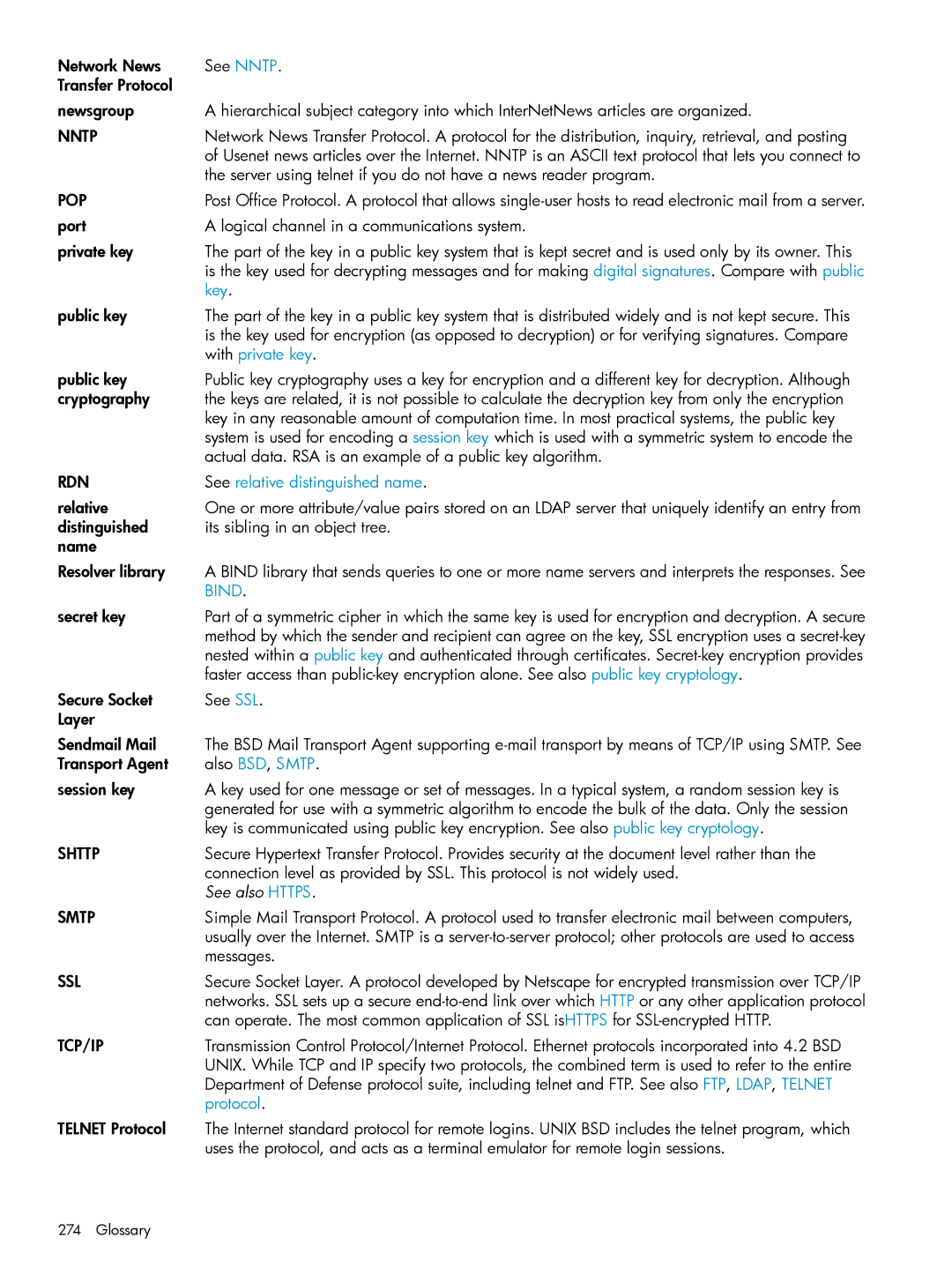Network News | See NNTP. |
Transfer Protocol |
|
newsgroup | A hierarchical subject category into which InterNetNews articles are organized. |
NNTP | Network News Transfer Protocol. A protocol for the distribution, inquiry, retrieval, and posting |
| of Usenet news articles over the Internet. NNTP is an ASCII text protocol that lets you connect to |
| the server using telnet if you do not have a news reader program. |
POP | Post Office Protocol. A protocol that allows |
port | A logical channel in a communications system. |
private key | The part of the key in a public key system that is kept secret and is used only by its owner. This |
| is the key used for decrypting messages and for making digital signatures. Compare with public |
| key. |
public key | The part of the key in a public key system that is distributed widely and is not kept secure. This |
| is the key used for encryption (as opposed to decryption) or for verifying signatures. Compare |
| with private key. |
public key | Public key cryptography uses a key for encryption and a different key for decryption. Although |
cryptography | the keys are related, it is not possible to calculate the decryption key from only the encryption |
| key in any reasonable amount of computation time. In most practical systems, the public key |
| system is used for encoding a session key which is used with a symmetric system to encode the |
| actual data. RSA is an example of a public key algorithm. |
RDN | See relative distinguished name. |
relative | One or more attribute/value pairs stored on an LDAP server that uniquely identify an entry from |
distinguished | its sibling in an object tree. |
name |
|
Resolver library | A BIND library that sends queries to one or more name servers and interprets the responses. See |
| BIND. |
secret key | Part of a symmetric cipher in which the same key is used for encryption and decryption. A secure |
| method by which the sender and recipient can agree on the key, SSL encryption uses a |
| nested within a public key and authenticated through certificates. |
| faster access than |
Secure Socket | See SSL. |
Layer |
|
Sendmail Mail | The BSD Mail Transport Agent supporting |
Transport Agent | also BSD, SMTP. |
session key | A key used for one message or set of messages. In a typical system, a random session key is |
| generated for use with a symmetric algorithm to encode the bulk of the data. Only the session |
| key is communicated using public key encryption. See also public key cryptology. |
SHTTP | Secure Hypertext Transfer Protocol. Provides security at the document level rather than the |
| connection level as provided by SSL. This protocol is not widely used. |
| See also HTTPS. |
SMTP | Simple Mail Transport Protocol. A protocol used to transfer electronic mail between computers, |
| usually over the Internet. SMTP is a |
| messages. |
SSL | Secure Socket Layer. A protocol developed by Netscape for encrypted transmission over TCP/IP |
| networks. SSL sets up a secure |
| can operate. The most common application of SSL isHTTPS for |
TCP/IP | Transmission Control Protocol/Internet Protocol. Ethernet protocols incorporated into 4.2 BSD |
| UNIX. While TCP and IP specify two protocols, the combined term is used to refer to the entire |
| Department of Defense protocol suite, including telnet and FTP. See also FTP, LDAP, TELNET |
| protocol. |
TELNET Protocol | The Internet standard protocol for remote logins. UNIX BSD includes the telnet program, which |
| uses the protocol, and acts as a terminal emulator for remote login sessions. |
Page 274
Image 274
